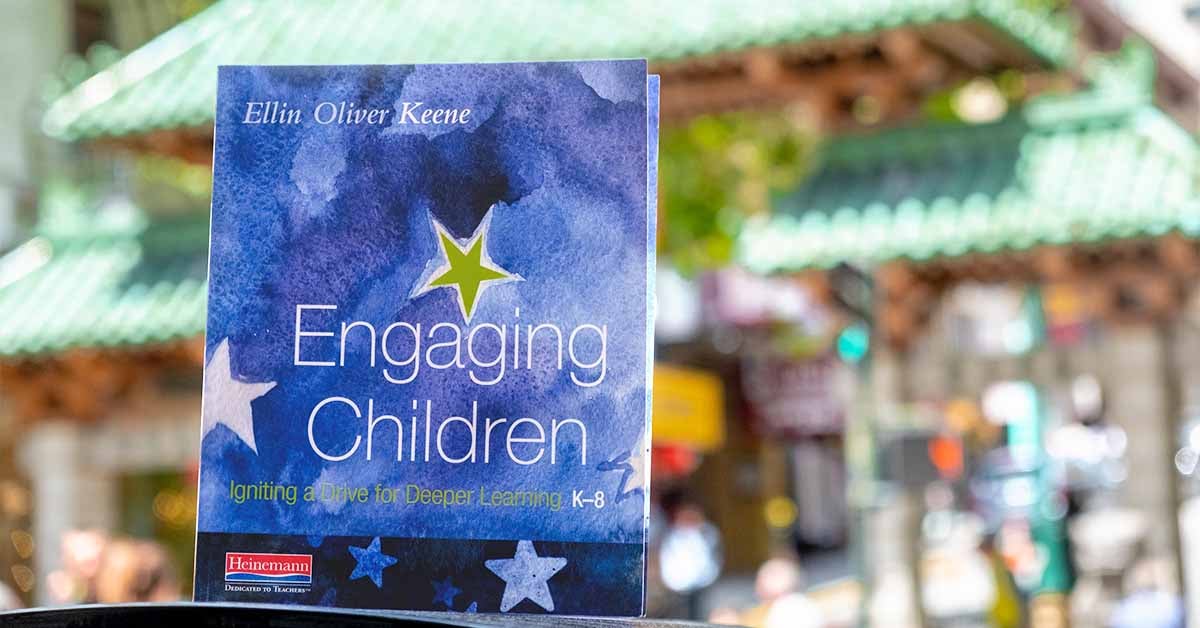 Adapted from Engaging Children by Ellin Oliver Keene
Adapted from Engaging Children by Ellin Oliver Keene
We describe periods of engagement as occasions when time stands still and every pressing issue recedes into the background while we listen to music, write in a journal, listen to the sounds of nature, or study a topic of passionate interest. Perhaps we remember times when we were totally caught up in a discussion about politics or contemporary social issues, when others' opinions and knowledge impacted our thinking in a permanent way. Or our sense of outrage towards social injustices peaks, and we begin to act on behalf of others. We are engaged.
How can we help kids to identify when they have an engaged experience and how they can create the condition necessary to repeat it and create new ones? Consider these moves in your classroom:
- Talk to your students about the joy of being truly engaged. Differentiate between compliance, participation, and collaboration, motivation, and engagement. Describe how all are important for learners but that, as a proportion of time, you would like them to spend increasing periods of time engaged rather than in compliance as the school year goes on. Make clear that some engaged experiences are related to academic pursuits and other are not.
- Model and describe what it is to be deeply engaged.
- Take questions from your students and encourage them to share their own engaged experiences. Help them build off one another's recollections; encourage them to capture those moments and the associated emotions in writing and art.
- Begin an anchor chart and/or Google document on which you can generate a list of words that define engagement for your students.
- Talk about the differences between instances in which students complied, participated, and were motivated, but list them on a separate chart of document to make the distinctions clear. Acknowledge and share examples of negative experiences associated with compliance, participation, motivation, and sometimes even engagement. Think together about the proportion of time you and your students want to spend in each.
- Ask children to continue to add to the chart and/or Google doc to keep the conversation about engagement fresh and dynamic.
These are only some of the beginning teaching moves you can use to help students increase the time they spend engaged. Feel free to adapt these first steps for your students.
•••
Learn more about Engaging Children on heinemann.com
 Ellin Oliver Keene has been a classroom teacher, staff developer, non-profit director, and adjunct professor of reading and writing. For sixteen years she directed staff development initiatives at the Denver-based Public Education & Business Coalition. She served as Deputy Director and Director of Literacy and Staff Development for the Cornerstone Project at the University of Pennsylvania for four years. Ellin works with schools and districts throughout the country and abroad with an emphasis on long-term, school-based professional development and strategic planning for literacy learning. She serves as senior advisor at Heinemann, overseeing the Heinemann Fellows initiative and is the editor of the Heinemann Professional Development Catalog-Journal. Follow her on Twitter @EllinKeene
Ellin Oliver Keene has been a classroom teacher, staff developer, non-profit director, and adjunct professor of reading and writing. For sixteen years she directed staff development initiatives at the Denver-based Public Education & Business Coalition. She served as Deputy Director and Director of Literacy and Staff Development for the Cornerstone Project at the University of Pennsylvania for four years. Ellin works with schools and districts throughout the country and abroad with an emphasis on long-term, school-based professional development and strategic planning for literacy learning. She serves as senior advisor at Heinemann, overseeing the Heinemann Fellows initiative and is the editor of the Heinemann Professional Development Catalog-Journal. Follow her on Twitter @EllinKeene



